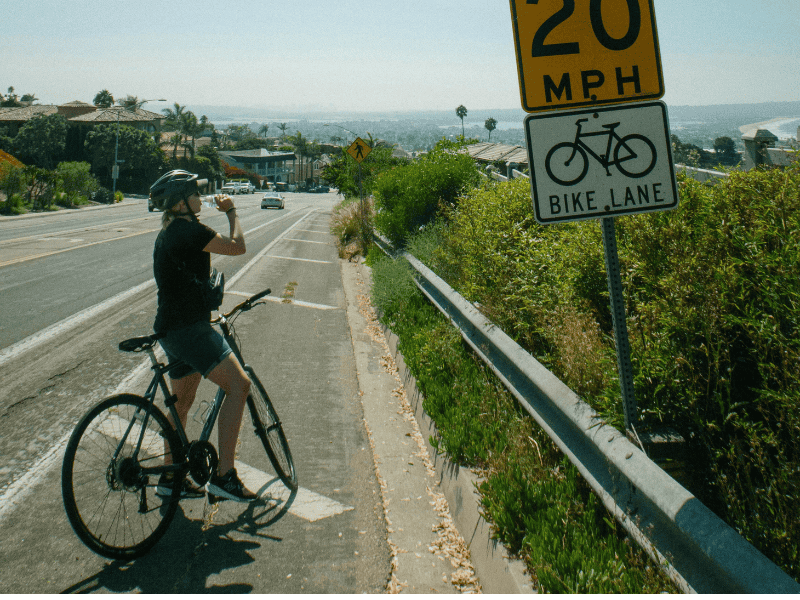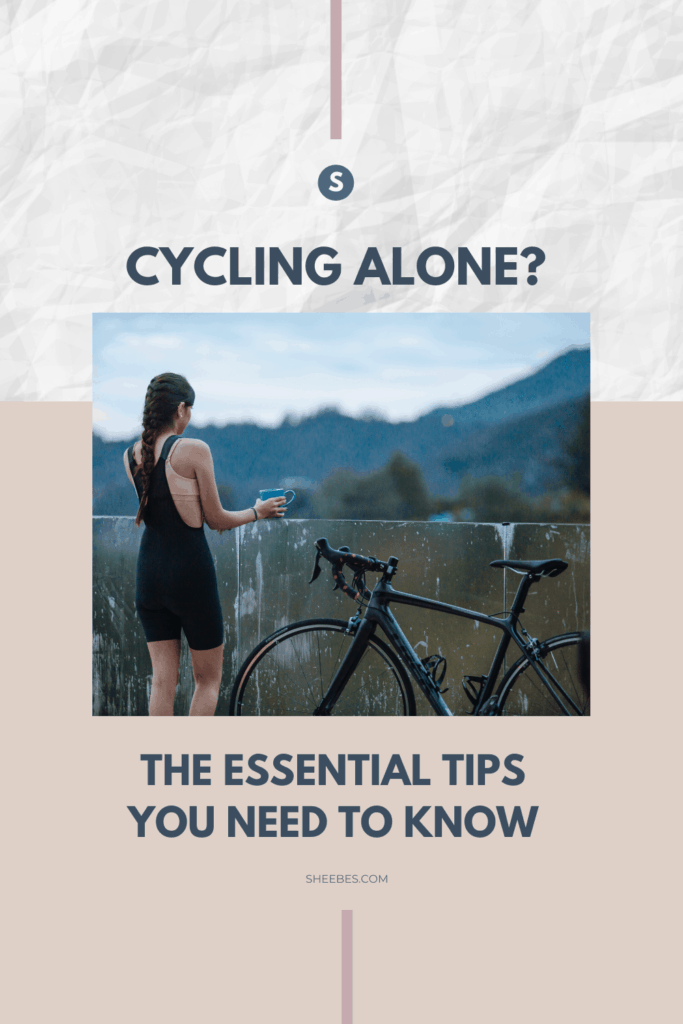It’s Saturday morning and you’ve FINALLY decided that today is THE DAY. The day you set off alone to explore the world by bike. Just you and the open road.
It’s gonna be great.
But wait. Do you have everything you need? Is it safe?! Will you even enjoy it??
*breathes in and out of paper bag*
Before you freak out, don’t! I’m here to help you put those worries to rest. By the end of this post, you’ll walk away with…
- All the gear—the road cycling essentials—you need on your bike ride
- How to stay safe while you’re cycling alone
Let’s dive in.
Affiliate Disclosure: I’m here to help you grow as a rider and runner. So to keep things running smoothly and the content free, I participate in the Amazon Services program and select affiliate networks. So, when you click on those affiliate links, I earn a small commission at no extra cost to you.
CYCLING ALONE? THESE ARE THE TIPS YOU NEED TO KNOW TODAY

Let’s talk road cycling essentials
First up, your bike.
Ever been to a bike shop? Aluminum frame or carbon? $500 or $5000? Road or cross? Is this all too much?
I’m here to help you bust through the confusion.
Here are 3️⃣ things you should know up front before you step foot into your local bike shop.
Helmet.
Let’s be real: a helmet is a total fashion statement. (jk)
But seriously, it’s your buffer against head injuries.
Honest question: Would you rather spend $250 on a helmet, or $250,000 in hospital fees?
Couple more things about helmets (consider this the ⚡️ lightning round):
Other must-haves
And don’t forget—after your ride, recovery is EVERYTHING. 🙌🏼 What you do right after can make a difference in how sore you feel later. So, take a peep at my ✨cycling recovery timeline✨ for more deets!

So…is it safe to bike alone? 🤔 (It’s pretty safe—unless you like to live on the edge?—as long as you follow THESE bike safety tips.)

Do a pre-ride bike check ✔️: Check your tires, bike chain, brakes, and do a quick test ride to make sure everything’s good to go.
Gear up for safety:
Check your local bike laws 🎧🚫: Some states—like California, Rhode Island, Virginia—won’t let you rock out with your headphones while riding because they’ll block important sounds. So it’s good to know where it’s allowed…or not. (See: League of American Bicyclists for more.)

The cycling apps to keep you safe (and on track) when you’re cycling alone
Your phone’s not just for mid-ride selfies…it can help you find your way and stay safe. 🙌🏼
Here are some cycling apps to have:
⛑🦺 Safety-first apps:
🗺 Navigation & route planning
Still feeling a bit nervous about riding solo? You’re not alone! When I first hit the road by myself, I couldn’t shake the feeling I was missing something crucial (spoiler: it was confidence).
Here’s what helped me: start small, stick to bike-only routes, and always share your plan with someone.

Sources